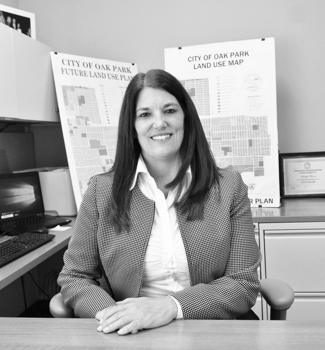Special Feature by Mary Meldrum
WITH AN INCREASE IN THE NUMBER OF BARS and restaurants and a heavier volume of foot traffic, Ferndale has become a destination city. And, like many destinations, there is a need for parking. While this seems like a good problem to have, change doesn’t come easy to any established city’s infrastructure, and this subject has created angst for many in Ferndale. The growing pains experienced in Ferndale are being felt by many communities in the Detroit area, and even nationwide.
In the 1970s and 1980s, there was a push to move out away from downtown areas, like Detroit. That movement has recently reversed, and there is a shift in lots of communities to embrace downtown density again. There is a struggle in community development to navigate, accept and accommodate that change in cities across America.
After a lengthy development phase and input from businesses and residents, the City of Ferndale finally  approved plans for a mixed-use parking structure on West Troy near Allen at its October 23 Council meeting. Dubbed “The Dot” (‘Development On Troy’), the project features 397 much-needed off-street parking spaces. It will also house over 14,500 square feet of ground floor retail and commercial space, over 39,800 square feet of office space, and a stand-alone residential development capable of supporting 14 to 25 units.
approved plans for a mixed-use parking structure on West Troy near Allen at its October 23 Council meeting. Dubbed “The Dot” (‘Development On Troy’), the project features 397 much-needed off-street parking spaces. It will also house over 14,500 square feet of ground floor retail and commercial space, over 39,800 square feet of office space, and a stand-alone residential development capable of supporting 14 to 25 units.
With the approval in place, the city will now finalize engineering, put out bids for contractors, and start construction on the parking deck by April of 2018. Many are relieved to know there will be more parking coming soon. But, while the debates regarding most of the details of this project have been put to rest with this approval, there are still some unhappy business owners and residents who have questions and concerns regarding loading zones, crosswalks, environmental impacts, as well as who will – and more importantly who will not – benefit.
For one thing, there are questions about the City devoting 100 per cent of the $200 thousand dollars allotted for parking mitigation towards providing free valet service.
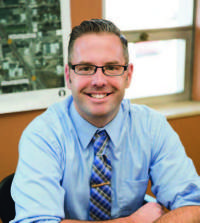 Assistant City Manager Joe Gacioch provided me with an update on the progress since the October approval of the DOT.
Assistant City Manager Joe Gacioch provided me with an update on the progress since the October approval of the DOT.
“Right now, the architects are going through the schematic design process,” he reports. “They are finalizing calculations for engineering elements.” He expects schematic designs to be completed within the next four weeks and, once the final design happens, they proceed to competitive bids for construction. The City will then review bids for construction and select a general contractor.
They are looking to break ground in the spring of 2018, concluding an 18-month approval process that included research and public engagement.
“For the long-term view, I think this project is efficient in terms of addressing adequate parking, walk-ability, and density in terms of the daytime and nighttime activity,” explains Gacioch. “Mixed-use helps address the daytime activity because we want to increase foot traffic with the office space. These are all goals that line up with the city’s plan. One of the great things about office space is that they leave at 5:00 P.M., and we have a vibrant downtown economy during the evening, so those spaces become available to accommodate the evening traffic.”
“For the short-term, we recognize there will be discomfort for downtown. We want to minimize the disruption. We have been working with the DDA and businesses to come up with strategies to provide temporary parking solutions.” Gacioch shares, “This inward movement to downtown density is very difficult, and we have to be sensitive to that.” He admits that “nothing is perfect,” but they are working to ease the burden of the construction as much as possible.
They will be testing valet services downtown. A free valet service will be provided downtown during the  testing periods (Small Business Saturday weekend, November 24-26, and during the DDA Holiday Lights Festival, December 8-10). The City is also looking to rent a parking lot close to downtown to add more parking spaces during the construction period.
testing periods (Small Business Saturday weekend, November 24-26, and during the DDA Holiday Lights Festival, December 8-10). The City is also looking to rent a parking lot close to downtown to add more parking spaces during the construction period.
There are grave concerns having to do with the survival of some of the small downtown businesses. They will feel the pain, more than anyone else, of the expected 15-month long construction project which will, of course, put even more pressure on the existing limited parking. Will their customers endure the difficulties of circling for a space or parking further away? Or will they just go somewhere else?
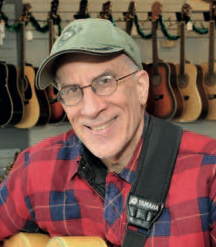 Pat Doran, Professional Guitars
Pat Doran, Professional Guitars
Professional Guitar shop owner, Patrick Doran has been a small business owner in the city since 1990.
“There wasn’t always a robust nightlife here,” Doran says. Where Doran and others really feel the pain right now is on days of a big football game or St. Patrick’s Day. The bars patrons take up all the parking, and that becomes a problem for businesses like Professional Guitars or the Candle Wick Shoppe where somebody just wants to come and buy a guitar string or a candle. If somebody just wants to pop into a shop to buy an item, they will be put off by the lack of parking. Pat points out that it is also unlikely that his customers will circle the block multiple times to find parking.
“I think everyone in Ferndale realizes something needs to be done about the parking,” Pat admits. Most understand the need for additional parking, but they don’t all understand the City’s drive to make it a mixed-use project rather than just throw up a barn for cars. “I think it is going to be more of a hardship for retail businesses to survive when they start the construction.” In addition, night life brings its own flavor of change. “My store is adjacent to an alley, and I can’t count the discarded liquor bottles and beer cans that were not there in 1990,” he reports. “The place next to me has had problems with alcohol and fights.”
Prasad Venogopal, Ferndale Resident
Prasad Venogopal is one of many parents whose children attend the Mejishi Martial Arts Studio on Nine Mile, a business that backs up to Troy Street and is very close to the planned structure.
Venugopal and other parents drop their children off on Troy Street, and many of those kids cross that busy street to get to Mejishi’s. “Children as young as four and five are crossing, and I have personally seen numerous instances where cars have not stopped for the crosswalk and children have come close to being run over,” explains Venugopal. “With that kind of traffic and the dozens of kids who attend Mejishi, I am concerned about what impact the parking deck is going to have on this situation. I haven’t seen the architectural drawings, but if the crosswalk is not part of it, I think crossing the street will be more dangerous.”
Like others, Venugopal is not a fan of the mixed-use aspect of the parking deck. “I think if they need more parking, they should put in more parking. That’s all it should have been. That is how the conversation began,” he opines.
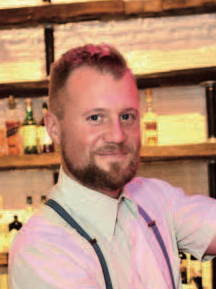 Chris Best, The Rust Belt
Chris Best, The Rust Belt
“This is very necessary. We are overdue for a parking solution in downtown Ferndale,” declares Chris Best, co-owner of the Rust Belt. Referring to the economic boom that the city has been experiencing, “There are no signs of slowing down as far as development; new businesses, lofts, condos and it is all adding density for businesses, which is great.”
Indeed, Ferndale has become a bustling town with several new businesses, more people and, as Chris adds, “Unfortunately, that is the path for most downtowns, in order to grow. You need people to patronize the downtown; you need density and walkable downtowns, which are very coveted by quality retailers.”
Density creates a rich diversity. Parking is a problem because the mass transit system in the area is anemic. “While it will be a disruption during the building time – which is a big bummer – it is very much needed as part of the evolution of downtown Ferndale.”
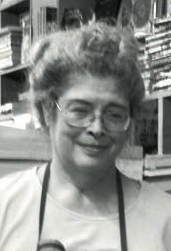 Martha Sempliner, Owner Library Bookstore
Martha Sempliner, Owner Library Bookstore
A landlord and business owner in Ferndale for over 30 years, Martha Sempliner has been following the progress of the city’s parking solution.
“I think this is going to be detrimental to every business. If they close the street for 15 months, where are the workers going to park? Where are the people who use the businesses going to park?”
With regard to the city providing valet or bus service to move shoppers, she doesn’t believe patrons will wait for that. In this day of instant access and convenience, she thinks shoppers just won’t come and will choose to go someplace else.
Referring to all the other more convenient choices available to customers, “Why would they wait to take a bus across the street?”
“What everyone here needs is parking. They don’t need the rest of that. We don’t need apartments or businesses,” She insists.
With clientele that routinely travels from areas like Detroit, downriver, and Ann Arbor, Martha is wary that the construction of the parking deck will disrupt their visits to her store.
As a landlord, the parking lot she owns already experiences people parking there who are not her customers. With regard to illegal parking in her lot, she says, “This project is going to exacerbate the problem we already have.”

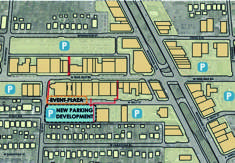
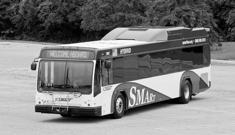

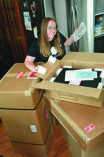 patron or you’re just giving this article a quick look, you’re part of making our dream come true. Ferndale Radio has live programming on the air, and you made it happen.
patron or you’re just giving this article a quick look, you’re part of making our dream come true. Ferndale Radio has live programming on the air, and you made it happen.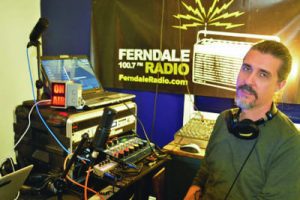 of volunteers has been happily filling our live schedule, and we’re delivering music that’s rarely — if ever —heard anywhere else on the FM dial.
of volunteers has been happily filling our live schedule, and we’re delivering music that’s rarely — if ever —heard anywhere else on the FM dial.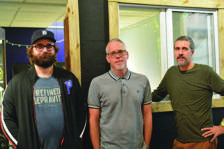 sporting events and talk shows just as soon as we get our sea legs, and we hope to have a variety of specialty programming and a livestream up and running sometime in 2018.
sporting events and talk shows just as soon as we get our sea legs, and we hope to have a variety of specialty programming and a livestream up and running sometime in 2018.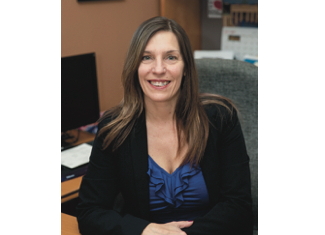
 Clinton 3) Johnson, etc. With IRV, no candidate can be elected until they have received at least 50% + 1 vote.
Clinton 3) Johnson, etc. With IRV, no candidate can be elected until they have received at least 50% + 1 vote.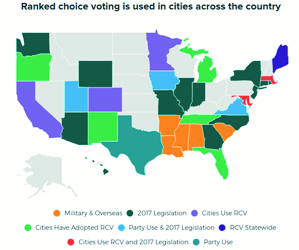 which instruct the voter how to mark their ballot. Recent feedback from the Secretary of State suggests that several changes to current election law are required to move forward. Most recently, ballot instructions have been reviewed by Ruth Johnson’s office and are currently being reviewed by Legislative Services.
which instruct the voter how to mark their ballot. Recent feedback from the Secretary of State suggests that several changes to current election law are required to move forward. Most recently, ballot instructions have been reviewed by Ruth Johnson’s office and are currently being reviewed by Legislative Services.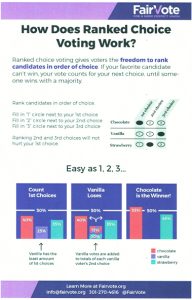 directly impact the quality of life in Ferndale. My background is in customer service, and I believe a customer-oriented mindset is crucial to effective public service. Prior to Ferndale I worked in the hospitality industry. I feel that every work experience has value, but none more so than being our City Clerk. I envision a future where we continue to be innovative, diverse, and always evolving to find the best ways to serve our residents.
directly impact the quality of life in Ferndale. My background is in customer service, and I believe a customer-oriented mindset is crucial to effective public service. Prior to Ferndale I worked in the hospitality industry. I feel that every work experience has value, but none more so than being our City Clerk. I envision a future where we continue to be innovative, diverse, and always evolving to find the best ways to serve our residents.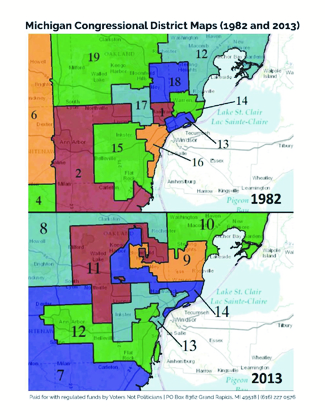
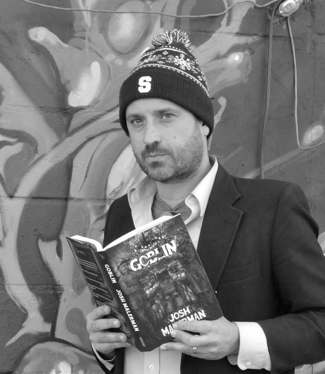

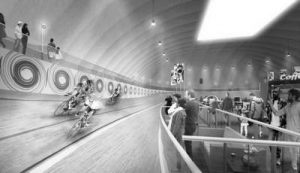 That’s harder to do here in Michigan because it’s cold for so many months out of the year. We wanted a place where people can come and work out that’s safe and clean. And, it’s indoors, so whether it’s raining, snowing or 80 degrees, it doesn’t matter. They don’t have to worry about traffic in there, either.”
That’s harder to do here in Michigan because it’s cold for so many months out of the year. We wanted a place where people can come and work out that’s safe and clean. And, it’s indoors, so whether it’s raining, snowing or 80 degrees, it doesn’t matter. They don’t have to worry about traffic in there, either.”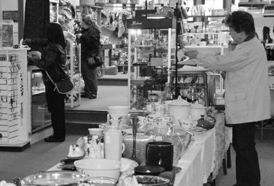
 items and more,” Williams explained, adding that “proceeds from the shop help to support the Open Hands Food Pantry located within the church (which is the largest emergency food bank for Oakland County), the Open Hands Garden, support groups that meet at the church, and a variety of organizations in the community such as Mariners Inn, Haven, SOS, Furniture Bank of Southeast Michigan, Common Ground and many more.” In addition to the items above, bedding, linen, DVDs and CDs and other goods are also accepted.
items and more,” Williams explained, adding that “proceeds from the shop help to support the Open Hands Food Pantry located within the church (which is the largest emergency food bank for Oakland County), the Open Hands Garden, support groups that meet at the church, and a variety of organizations in the community such as Mariners Inn, Haven, SOS, Furniture Bank of Southeast Michigan, Common Ground and many more.” In addition to the items above, bedding, linen, DVDs and CDs and other goods are also accepted.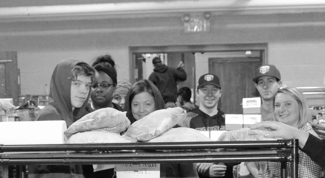
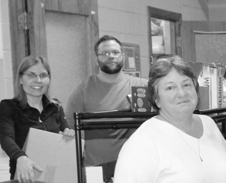 a need to provide a few cans of food whenever families came by who needed some assistance. “The groceries were kept on a small bookshelf in a Sunday School room,” Elizabeth explained. “After a few years, the whole room was taken over as a space to store and distribute food. Over time, more and more space was required, more volunteers were added, and now an entire floor of the church is dedicated for food storage and distribution.”
a need to provide a few cans of food whenever families came by who needed some assistance. “The groceries were kept on a small bookshelf in a Sunday School room,” Elizabeth explained. “After a few years, the whole room was taken over as a space to store and distribute food. Over time, more and more space was required, more volunteers were added, and now an entire floor of the church is dedicated for food storage and distribution.”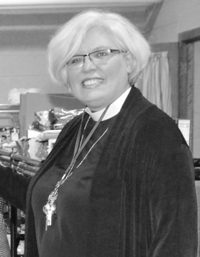 beds, and hope to expand the garden next year to lengthen our growing season and provide more vegetables. This is a volunteer-intensive project, and people come all over the region to help us plant, weed, and harvest. We always need more volunteers!” she explained.
beds, and hope to expand the garden next year to lengthen our growing season and provide more vegetables. This is a volunteer-intensive project, and people come all over the region to help us plant, weed, and harvest. We always need more volunteers!” she explained.